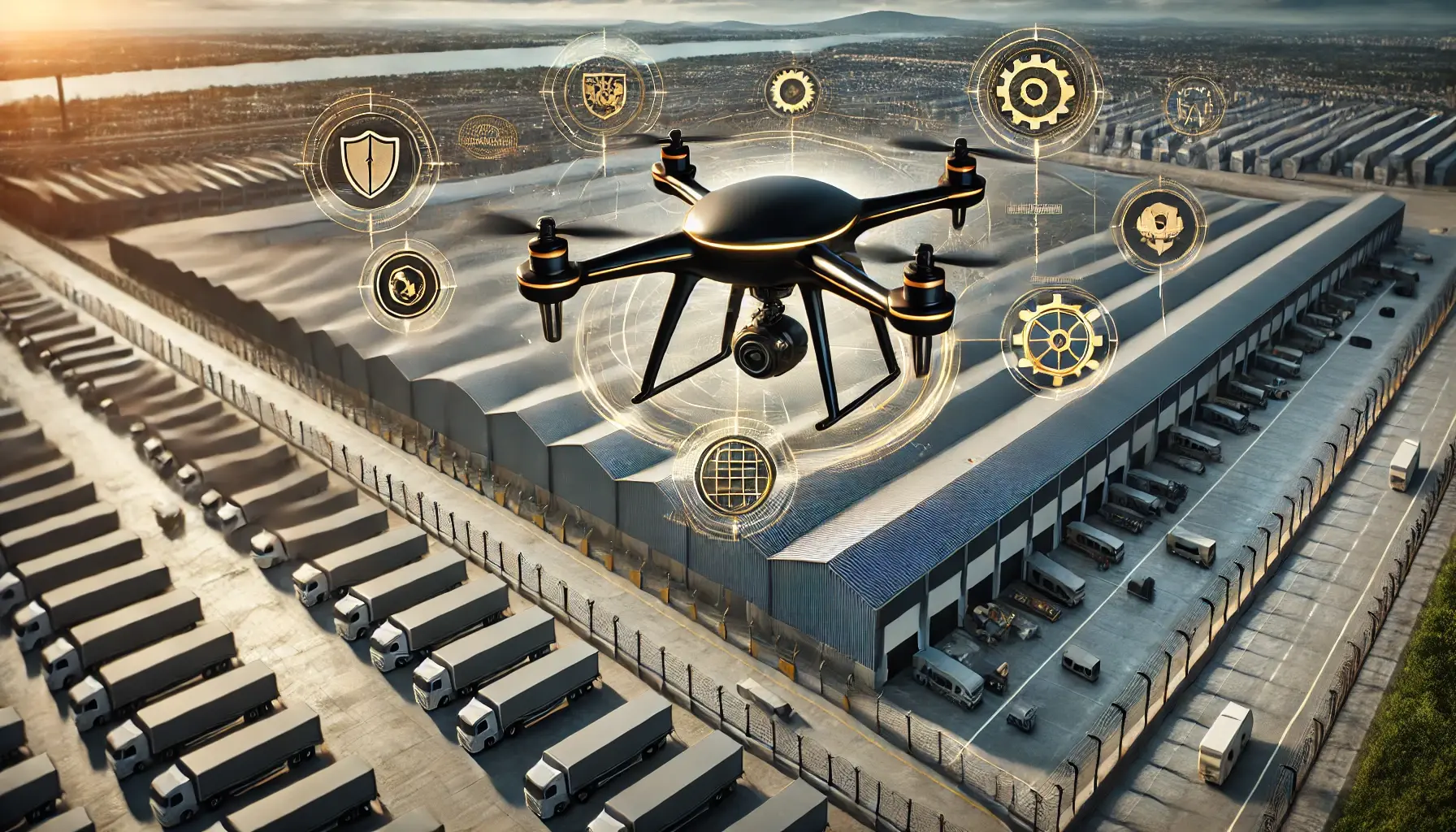Top 5 Challenges in Securing Industrial Facilities and How Drones Solve Them
Industrial facilities such as warehouses, manufacturing plants, and logistics hubs are essential to the global supply chain. However, their size, complexity, and remote locations present unique security challenges. Traditional security measures often struggle to keep up, but drones are proving to be an innovative solution. Here are the top five challenges in securing industrial facilities and how drones provide scalable and effective solutions. Need help setting up aerial drone security for your facility?
1. Large Perimeters and Coverage Gaps
The Challenge: Industrial facilities often span vast areas, making it difficult for traditional security methods to provide full coverage. Fixed cameras have blind spots, and on-ground patrols are limited by the time it takes to cover large perimeters. These gaps leave facilities vulnerable to intrusions and theft.
The Drone Solution: Drones excel in covering large perimeters quickly and efficiently. Equipped with high-resolution cameras and thermal imaging, drones can monitor expansive areas, eliminate blind spots, and respond to security breaches in real time.
Benefits:
-
Dynamic patrols for continuous perimeter monitoring.
-
Quick identification of unauthorized access points.
-
Ability to adapt to changing layouts or new construction.
Use Case: A logistics hub used drones to patrol a 10-acre facility, reducing the time to check perimeters from hours to just minutes while eliminating blind spots.
2. Delayed Response Times
The Challenge: Traditional security relies heavily on human response, which can be delayed due to distance or operational constraints. Delays in responding to alarms or suspicious activity can lead to significant losses.
The Drone Solution: Drones can be deployed instantly to investigate alarms or anomalies, providing real-time video feeds to security teams. This allows for faster assessments and quicker decision-making, minimizing potential damage.
Benefits:
-
Immediate deployment upon detecting threats.
-
Live feeds for informed response decisions.
-
Ability to track and follow intruders until ground teams arrive.
Use Case: A manufacturing plant integrated drones to respond to security alarms, reducing average response times by 70% and preventing multiple theft attempts.
3. Monitoring Hazardous or Hard-to-Reach Areas
The Challenge: Industrial facilities often have areas that are difficult or dangerous for humans to access, such as chemical storage zones, high-temperature areas, or elevated structures. Monitoring these zones is essential but risky.
The Drone Solution: Drones can safely navigate hazardous or hard-to-reach areas, collecting data and providing visuals without putting human personnel at risk. Their ability to hover and zoom in allows for detailed inspections and monitoring.
Benefits:
-
Enhanced safety by reducing the need for human intervention in hazardous zones.
-
Detailed inspections with high-resolution and thermal imaging.
-
Ability to operate in challenging environments, including confined spaces.
Use Case: A warehouse with a large chemical storage area used drones for inspections, eliminating the need for personnel to enter potentially dangerous zones.
4. Preventing Theft and Vandalism
The Challenge: Valuable equipment and inventory make industrial facilities prime targets for theft and vandalism. Traditional measures like CCTV cameras and static patrols are often insufficient to deter or catch culprits.
The Drone Solution: Drones act as proactive deterrents by patrolling facilities at unpredictable intervals and detecting suspicious activity. AI-powered analytics can identify unauthorized individuals or vehicles and alert security teams immediately.
Benefits:
-
Proactive deterrence through visible aerial patrols.
-
Real-time tracking of suspicious activity.
-
Integration with access control systems for enhanced protection.
Use Case: A warehouse implemented drone patrols and reduced theft incidents by 50% within the first six months of operation.
5. Scalability and Adaptability
The Challenge: Industrial facilities often grow or change over time, requiring security systems that can adapt to new layouts, increased perimeters, or higher security demands. Static systems are costly and time-consuming to scale.
The Drone Solution: Drones are inherently scalable and flexible. Additional drones can be deployed as facilities expand, and patrol routes can be easily adjusted to accommodate new layouts or priorities.
Benefits:
-
Cost-effective scalability for growing facilities.
-
Flexible programming for evolving security needs.
-
Rapid deployment to meet immediate demands.
Use Case: A logistics hub added drone units as it expanded to a second facility, ensuring seamless security coverage across both sites without significant additional costs.
Benefits of Drone Security for Industrial Facilities
-
Comprehensive Coverage: Drones eliminate blind spots and provide aerial views of large perimeters.
-
Cost Savings: Reduced reliance on static infrastructure and manpower lowers long-term expenses.
-
Proactive Threat Detection: AI analytics identify and address threats before they escalate.
-
Improved Safety: Drones minimize risks by monitoring hazardous areas remotely.
-
Scalable Solutions: Easily adapt to facility growth or changing security needs.
Key Features to Look for in Industrial Facility Drones
| Feature | Importance |
|---|---|
| High-Resolution Cameras | Captures clear visuals for accurate monitoring. |
| Thermal Imaging | Enables surveillance in low-light or hazardous areas. |
| AI-Powered Analytics | Detects anomalies and suspicious behavior. |
| Automated Patrols | Ensures consistent and efficient coverage. |
| Weather Resistance | Reliable operation in various environmental conditions. |
Frequently Asked Questions (FAQs)
Q: How do drones integrate with existing security systems? A: Drones can seamlessly connect with access control, CCTV, and alarm systems, enhancing your current security setup.
Q: Are drones cost-effective for smaller industrial facilities? A: Yes, drones reduce manpower needs and infrastructure costs, making them valuable even for smaller sites.
Q: Can drones operate in extreme weather conditions? A: Many professional drones are designed for reliability in rain, wind, and other challenging environments.
Q: How do drones handle privacy concerns? A: Drones can be programmed to focus only on specific zones and use encrypted systems to ensure data security.
Q: Are drones difficult to operate? A: Most modern drones come with user-friendly interfaces and automation, requiring minimal training for operation.
.png)
.png)
.png)

.png)
.png)

.png)
.png)
.png)
.png)
